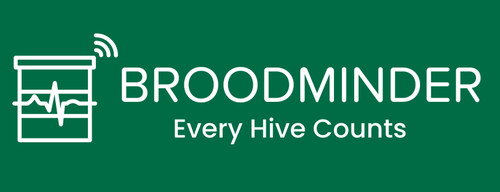BEEclipse 2024
Thanks for your interest in the BEEclipse, April 8th 2024. We will continue to post updates here as we have them.
Update 4/12/24 - Everyone should have removed their BEEclipse BeeDar devices by now and have them in the mail back to Wisconsin. We will start retrieving data as soon as we get them. I just got off a call with Barrett (UW) and Brock (Purdue) and they are very excited to start analyzing and discovering things. Barrett pointed out that this is the largest eclipse study (honeybees) ever done, it should make for some nice conclusions. We will set up an area on BeeCounted.org to track the analysis and make information available.
Update 4/9/24 - The party is over. We hope that everyone's experience was great.Now please leave your units in place for 2 more days and then return them for us to read.
We do have a little bit of early data from a unit just north of Indianapolis that was near one of our hub devices. It is only showing hourly data, the the event is still very clear. The one minute data from the devices being returned soon, will be awesome!

Update 4/6/24 - Here are the sites that will be monitoring using BeeDars.

Update: 4/5/24 - The BeeDars are delivered and we are getting a lot of great photos. Data collection begins today and runs through next Thursday April 11th. We are excited and hoping for great weather.

There is a video overview here.
BroodMinder is helping administrate the project on behalf of Barrett Klein, PhD at the University of Wisconsin LaCrosse.

Barrett has gathered some older eclipse papers here for the interested student.
Shipping of the BEEclipse units has ended.Here are the protocols for the BEEclipse event.
BEEclipse Protocols
BEEclipse Protocol, BeeDar
-
We will include detailed instructions with the BEEclipse BeeDar that you receive
-
Only one BeeDar should be installed per apiary. If you have beekeeping friends in your area, get them involved also. Multiple apiaries nearby are great.
-
The BroodMinder-BeeDar will already be running when you receive it and is ready to install

-
Place the -BeeDar on a strong, active hive on or before April 4th
-
This is easier with a helper
-
The box should be centered left to right and directly above the entrance with the label facing outward
-
Do not install below the entrance or tipped up/down
-
Use the enclosed strap to make the box snug to the brood box. This helps with the audio pickup of the hive sound.
-
-
Fill out the enclosed experiment record and return it with the BeeDar
-
Email a picture of your hive installation to beeclipse@broodminder.com
-
Avoid hanging out in front of the hive, particularly during the eclipse. Your motion will mix in with the bees and mess up the results.
-
Remove the BeeDar on or after April 12th and return using the enclosed shipping label.
BEEclipse Protocol, Existing Customers
-
Load the newest version of the Bees app. (version x.xx, not released yet)
-
Set your device(s) to BEEclipse mode approximately 2 hours before totality for your area
-
Show details for the device to shift to 1 minute samples
-
Choose “Set Rate” and then select “BEEclipse 1 min”. This option will only appear on April 8th.
-
This will notify our support channel that you are collecting BEEclipse data
-
-
Sync your device(s) approximately 2 hours after totality.
-
This will set your device back to 60-minute logging.
-
NOTE: 1 minute data adds up fast, don’t leave your device in BEEclipse mode.
-
-
We will send you an experiment record form to your user ID email to fill out and return.
BEEclipse Protocol, Observation Hive Dance Floor Video
-
High resolution video recordings (30 frames per second at high spatial resolution) taken at least 2 hours before through 2 hours after the scheduled time of totality on the following days: 2 days before the eclipse, 1 day before the eclipse, the day of, 1 day after, and 2 days after the eclipse (5 days total).
-
Camera should be stable, and should film the same portion of the hive (dance floor) each day. We should be able to see each bee clearly, wherever she is dancing. (Some observation hives have a one-way entrance, forcing returning foragers to enter one side of the frame. If someone does not have this, filming one side consistently is best.)
-
Lighting should be either ambient (but no direct sunlight on hive), or there should be no light (which would require infrared or security camera footage). Artificial lighting is to be avoided, unless it is infrared lighting in conjunction with a security camera.
BEEclipse Protocol, Extra Credit Hive Entrance Video
-
We are looking to have 5 hives across 5 locales responsibly video-recording their hive entrances at key times, this should be plenty to see something special. Video-recording protocols:
-
High resolution video recordings (30 frames per second at high spatial resolution) taken at least 2 hours before through 2 hours after the scheduled time of totality on the following days: 2 days before the eclipse, 1 day before the eclipse, the day of, 1 day after, and 2 days after the eclipse (5 days total).
-
Camera should be stable and should film the same view of the hive entrance each day. The view should be close enough to spot individual bees doing their thing.
Stay tuned.

